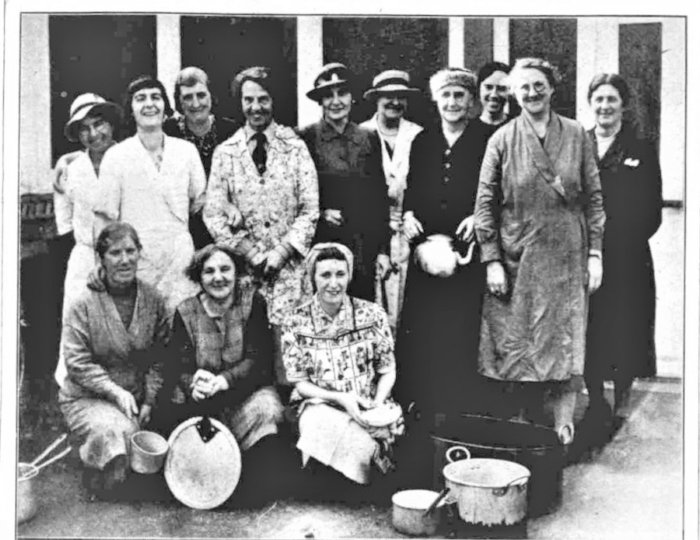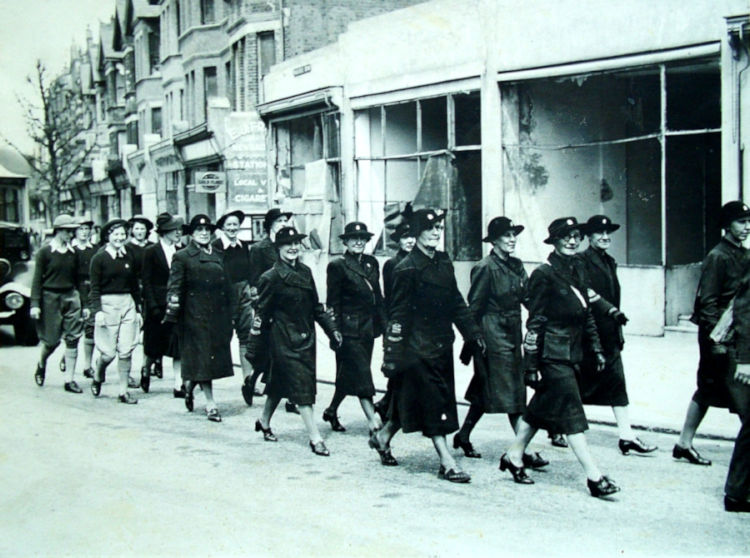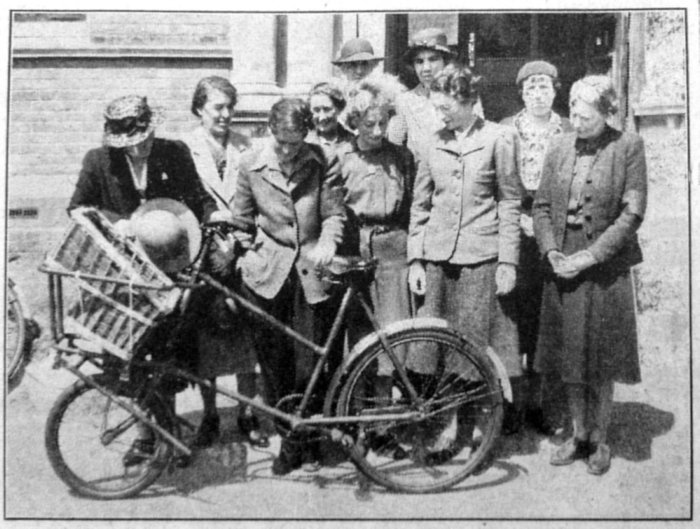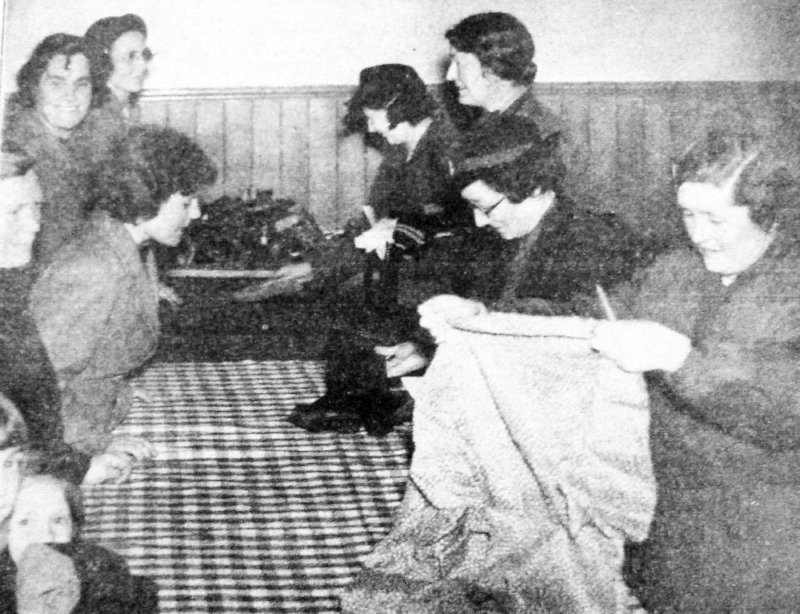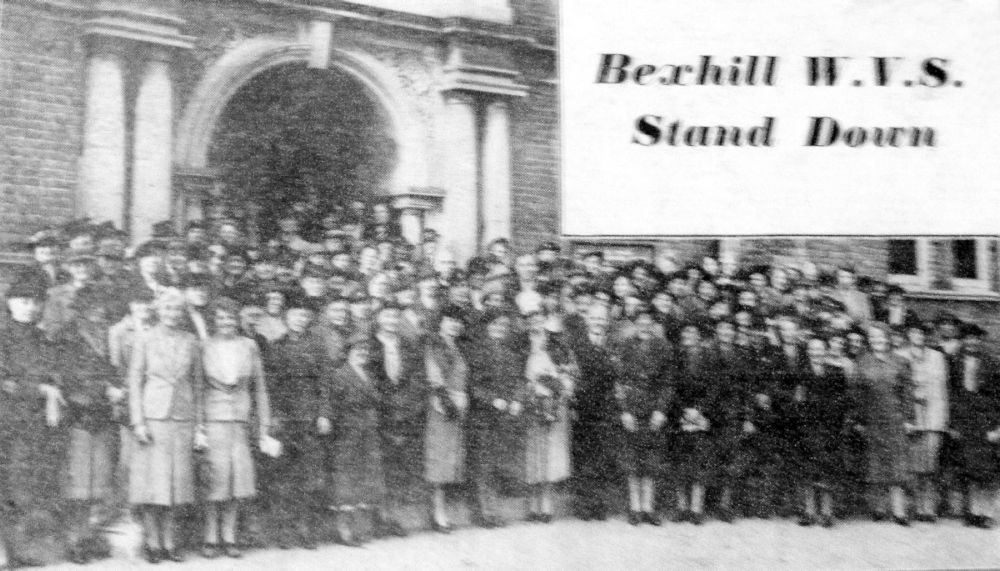The Women’s Voluntary Services for Civil Defence was set up in 1938 as a component of Civil Defence operating in support of local authorities’ Air Raid Precautions in anticipation of a possible future war. It was an entirely voluntary organisation without a rank hierarchy, but had clearly defined areas of function based on volunteer’s abilities.
In Bexhill the recruiting office for The Women’s Voluntary Services opened at the Town Hall in April 1939. The WVS was open to all women between the ages of 17 and 65. Bexhill’s organisation was directed by the Mayoress Mrs Berenice Cuthbert [who resigned in 1942 due to ill health]. There were four main departments:
Evacuation: [Alderman Miss Burrows – and deputy organiser] Billeting surveys carried out with assistance of town hall staff. Welfare work amongst evacuees
Nursing: [Mrs Striedinger, former Mayoress]
Transport: [Mrs Oxenford] Busy with evacuees. Drivers ready to assist ARP
Enrolment: [Miss MacMichael] Assisting members who wished to join up with various auxiliary branches of the forces
Several facilities were established – reflecting the WVS’ wide ranging activities:
Depots for reception of gifts of clothing at St George’s Guild Room, Cantelupe Road, St Stephen’s Parish Hall and St Mark’s Institute, Little Common
Canteens for communal meals at the Down School [Mrs Hyde], Egerton Park Pavilion [Mrs Bratt] with Beulah Baptist Schoolroom planned as a reserve
A hostel for mothers, after leaving the Maternity Home, Cooden, at Amherst Road
A mothers’ rest room at Albany Road.
Children’s Play Centres at Worthingholme and Downs schools
The office moved from the Town Hall to 37 Station Road in November 1939 and shortly after a Christmas party for blind evacuees was held.
As the war progressed into a more active phase in 1940 so did the WVS’ efforts.
Tinfoil was collected for Bexhill Hospital. Parcels were organised for those serving in forces. Mrs Turk maintained a list of Bexhill men serving. Aluminium collection was a big effort; 3 tons were collected within a month and 18 receiving centres were set up by the corporation. Jam making was not the preserve of the Women’s Institute. In July and August of 1940 Mrs Payne had organised 600 pounds of surplus fruit for this purpose.
By far the most recognised aspect of the Service’s work was in regard to evacuation. They had overseen the influx of evacuees in Bexhill in 1939 and with the tide of war turning their involvement turned to sending the evacuees elsewhere as well as the evacuation of Bexhill’s own children.
The WVS established a hospital at what was the Augusta Victoria School for German girls in Dorset Road. A Central clothing Depot was opened at 5 Devonshire Square, but the Egerton Park Pavilion canteen closed as an economy measure.
Alderman Miss Burrows resigned in the August as she and her school, Ancaster House, had evacuated away from Bexhill, and was replaced by Miss MacMichael. Mrs Joyce Alexander was WVS secretary.
By the September the offices relocated to be with Town Hall services at Garth Place.
In 1941 the American War Relief Society presented the WVS with mobile canteens and Bexhill was fortunate to be allocated one, this was used for the support of civil defence workers and was run by Mrs Burke, Mrs Murray and Mrs Modin. Two new ventures that year were a mobile library for the troops run by Mrs Bennett MBE and the former Sydenham Café on the corner of Sea and Cantelupe Roads was opened as the Forces Corner canteen run by Mrs Hollins.
Sad news came in January 1943 with the death of Miss Ada Adamson who was killed at her home, Suffolk House, Brassey Road in a tip and run raid, along with three other people.
In the June the WVS received a very useful gift from South Africa. A bicycle painted green and inscribed WVS. This was used for the collection of jars for jam making.
A Mobile Clothing exchange, based in Lewes, visited Bexhill in April 1944. Leading to a permanent exchange being established at The Red House, 17 Sutherland Avenue. This endeavour was run by Mrs P W Phillips, Mrs Denchfield, Mrs Williams, Mrs Key, Mrs Johnson, Mrs Dash, Mrs Griffiths and Mrs Phelps. Yet more evacuation work took place with the evacuation of Bexhill children in the face of flying bomb attacks – and the children’s return later in the year.
In January 1945 the Service relocated its headquarters to The Red House and continued its work until close down on 05 September followed by a close down tea party at the Town Hall on 27 September. Mrs Joyce Alexander was left as the liaison officer with the Council and she went on to be a significant part of Bexhill’s public and civic life. Over 1,600 women had served.
The Women’s Voluntary Services never really went away. In 1966 the service was granted the honour of adding ‘Royal’ to their title, becoming the Women’s Royal Voluntary Service. The WRVS affiliation to Civil Defence ended in 1968 when Civil Defence was disbanded. The service becoming a registered charity. In today’s world – known since 2013 as the Royal Voluntary Service – it is a major service provider of care, particularly to the elderly, operating out of 67 Hubs with the help of around 20,000 volunteers.


